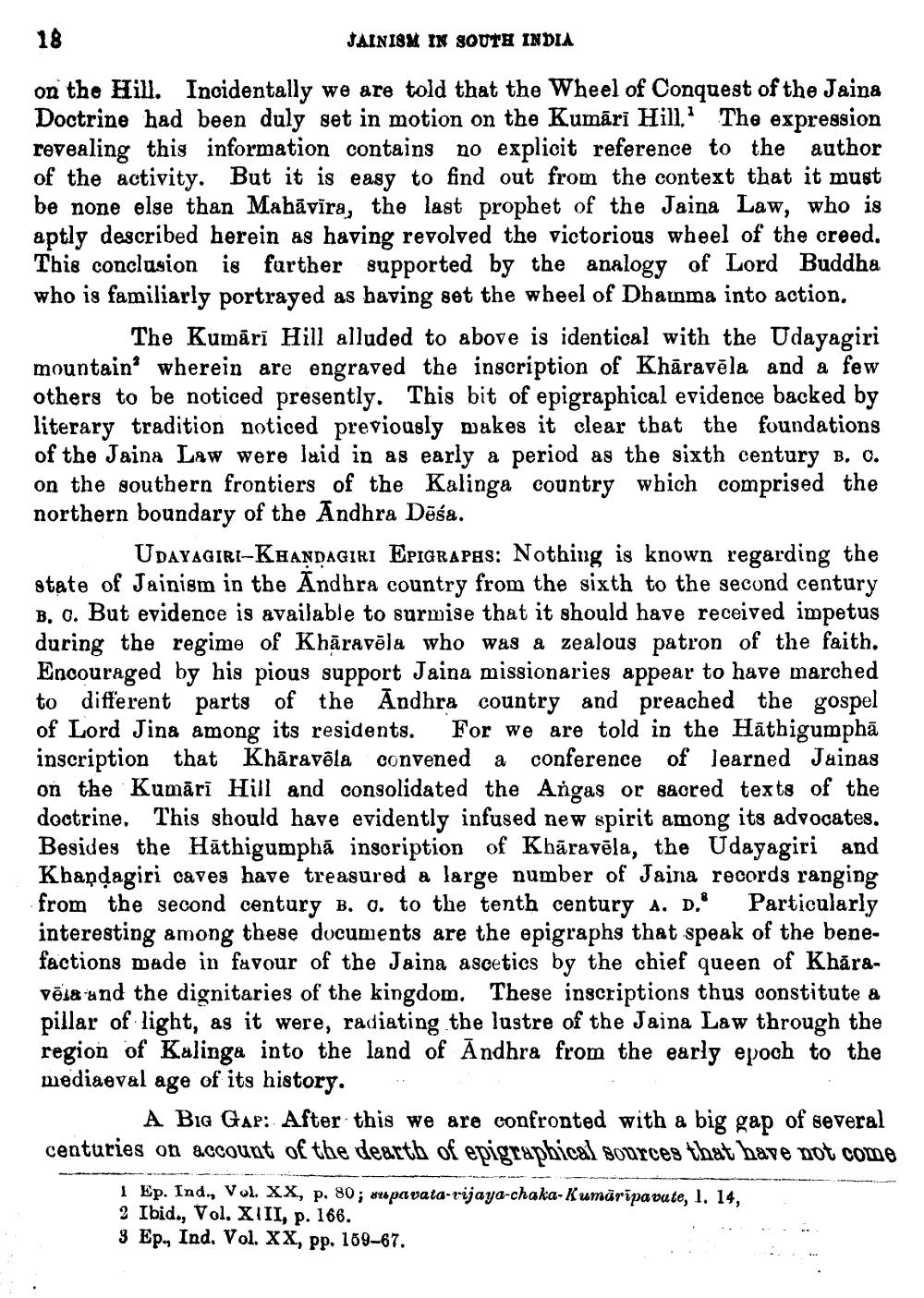________________
18
JAINISM IN SOUTH INDIA
on the Hill. Incidentally we are told that the Wheel of Conquest of the Jaina Doctrine had been duly set in motion on the Kumārī Hill.' The expression revealing this information contains no explicit reference to the author of the activity. But it is easy to find out from the context that it must be none else than Mahavira, the last prophet of the Jaina Law, who is aptly described herein as having revolved the victorious wheel of the creed. This conclusion is further supported by the analogy of Lord Buddha who is familiarly portrayed as having set the wheel of Dhamma into action.
The Kumari Hill alluded to above is identical with the Udayagiri mountain' wherein are engraved the inscription of Khāravēla and a few others to be noticed presently. This bit of epigraphical evidence backed by literary tradition noticed previously makes it clear that the foundations of the Jaina Law were laid in as early a period as the sixth century B. C. on the southern frontiers of the Kalinga country which comprised the northern boundary of the Andhra Desa.
UDAYAGIRI-KHANDAGIRI EPIGRAPHS: Nothing is known regarding the state of Jainism in the Andhra country from the sixth to the second century B. C. But evidence is available to surmise that it should have received impetus during the regime of Kharavela who was a zealous patron of the faith. Encouraged by his pious support Jaina missionaries appear to have marched to different parts of the Andhra country and preached the gospel of Lord Jina among its residents. For we are told in the Hathigumphā inscription that Kharavela convened a conference of learned Jainas on the Kumārī Hill and consolidated the Angas or sacred texts of the doctrine. This should have evidently infused new spirit among its advocates. Besides the Hathigumpha inscription of Khāravēla, the Udayagiri and Khandagiri caves have treasured a large number of Jaina records ranging from the second century B. o. to the tenth century A. D. Particularly interesting among these documents are the epigraphs that speak of the benefactions made in favour of the Jaina ascetics by the chief queen of Kharavela and the dignitaries of the kingdom. These inscriptions thus constitute a pillar of light, as it were, radiating the lustre of the Jaina Law through the region of Kalinga into the land of Andhra from the early epoch to the mediaeval age of its history.
A BIG GAP: After this we are confronted with a big gap of several centuries on account of the dearth of epigraphical sources that have not come
1 Ep. Ind., Vol. XX, p. 80; supavata-vijaya-chaka-Kumāripavate, 1. 14,
2 Ibid., Vol. XIII, p. 166. 3 Ep., Ind. Vol. XX, pp. 159-67.




